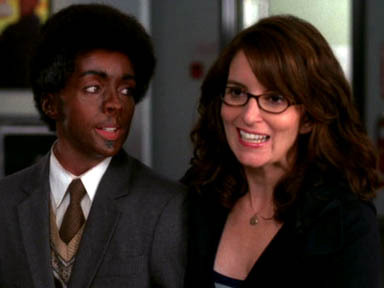In one controversial episode, the show uses blackface on Jenna Maroney, but it is unclear if the viewers should be offended by it or pleased that the other characters found it offensive due to the racist history of minstrelsy.

This confusing use of blackface is not the only reason why Tina Fey's writing can be considered racist, however. An episode entitled The C Word addresses the fact that Tracy Jordan has no intellectual importance and is only present for comic relief, which is typical of a Sambo character. Jordan is described as a "child" who needs "supervision" and "coddling," for he is "wired" to make trouble for everyone else who runs the show if left to his own devices. On top of his child-like demeanor, he is gullible and uneducated. In The C Word, Jordan recognizes that he is supposed to fit into the role of funny black man and is offended by that expectation, but the recognition of the stereotype does not redeem the racist nature of his character.


Many fans of the show argue that Tina Fey was simply drawing from the comedic style of Tracy Morgan, the actor who plays Jordan on the show, instead of perpetuating the Sambo. The writers, however, made a conscious decision to create a one-side character that was a collection of racist tropes. The other main recurring black character is Toofer, whose name comes from “two for one,” because he is black and went to Harvard. The entire character is centered around how “unblack” Toofer is because of his formal speech and expensive attire.
Tracy Jordan's racist character makes a statement about how stereotypes should be portrayed on comedy television shows. Instead of having characters that embody these stereotypes, like Jordan, and offhandedly saying that the stereotype is wrong, television shows should have characters that defy racial profiles all together.

I agree with your argument, I remember watching an episode of the show where Tina Fey's character suspected that Tracy didn't know how to read. It seems that Tina Fey was attempting to satirize the stereotypes as you mentioned in the beginning of your analysis.
ReplyDeleteYour argument was articulated very well. I liked how you challenged one of modern television's most famous writers and Fey's justification for using such stereotypes.
ReplyDeleteYour argument was articulated very well. I liked how you challenged one of modern television's most famous writers and Fey's justification for using such stereotypes.
ReplyDelete